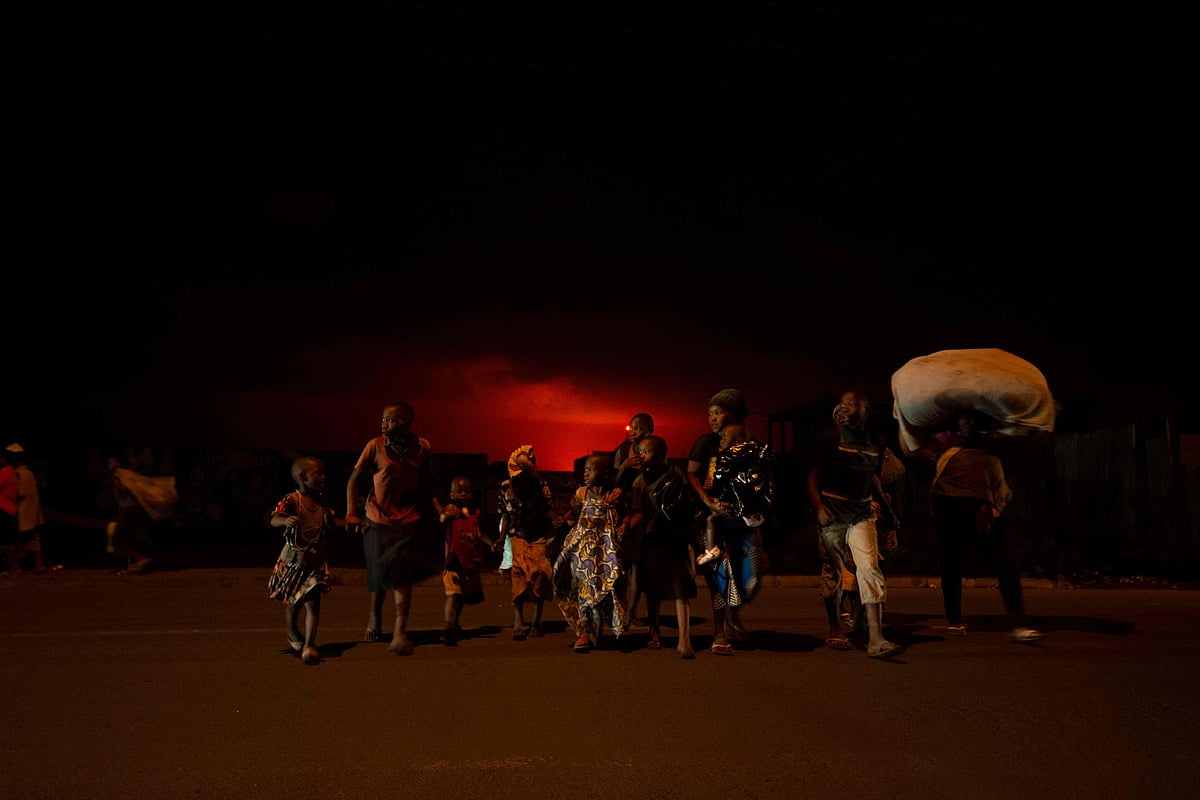
Thousands flee Goma city in DR Congo after volcano erupts
Thousands have fled a volcanic eruption in the Democratic Republic of Congo with lava from Mount Nyiragongo reaching Goma city early Sunday.
Even before the official announcement, people had started filling the streets and carrying what they could as they headed out of the city, where the last major eruption killed 100 people.
“The sky has turned red,” one resident, Carine Mbala, told AFP.
“There is a smell of sulphur. In the distance you can see giant flames coming out of the mountain,” she said.
Officials said the lava had reached Goma city airport—located on the outskirts of the metropolis on the shores of Lake Kivu—although residents said it had stopped at the edge of the facility.
“The situation is deteriorating,” an official from Virunga National Park, where the volcano is located, told his staff in a memo.
Communications Minister Patrick Muyaya confirmed on Saturday an evacuation plan had been activated, adding: “The government is discussing the urgent measures to take at present.”
Meanwhile, Congolese President Felix Tshisekedi said he would “interrupt his stay in Europe to return home this Sunday to supervise the coordination of aid”.
By early Sunday at least 3,000 people had arrived in neighbouring Rwanda, according to the country’s national broadcaster.
The Rwanda Broadcast Agency tweeted photos of those arriving in Rubavu district, adding they would be “accommodated in schools and places of worship that have been made ready”.
The first departures from Goma city came even before the official confirmation that Mount Nyiragongo had erupted at around 7 pm Saturday, spewing red fumes into the night sky.
The Virunga Park official said Sunday “the flow is also descending on the town. It has now reached the airport”, adding the lava was likely to reach the shores of Lake Kivu.
“The eruption of Nyiragongo is similar to the eruption in 2002,” he said, asking all residents near the airport to “evacuate without delay”.
At this stage, he said, “the other districts of the city were not in danger” as the lava was unlikely to reach those areas.
I’m scared again
Power was already cut in large parts of the city when hundreds of residents began leaving their homes.
Some headed out of the southern end of the city towards the nearby border post with Rwanda, while others headed west towards Sake, in the neighbouring Congolese region of Masisi.
Resident Richard Bahati said he was incredibly worried about the eruption: “I lived through this volcano problem in 2002.
“The volcano had devastated all our homes and all our possessions. That’s why I’m scared again this time.”
Late Sunday electricity was cut off in a large part of the city, with thousands of people—encumbered with mattresses, food and parcels—heading towards the Rwandan border.
“There are a lot of people on the road, a lot of cars, it’s an escape,” one man with his family in his car told AFP.
“It is moving at a snail’s pace, on three or four lanes,” he said, adding: “There are children, women, old people who are on foot and the rain is coming. It’s complicated.”
Last flights
Goma is home to a large contingent of peacekeepers and staff of MONUSCO, the UN mission in the country, as well as the base of many NGOs and international organisations.
Several planes, belonging to Monusco and private companies, took off in the evening, according to an airport source, with a local adding they had also seen the unusual nighttime activity.
In a 10 May report, the Goma Vulcanology Observatory warned that seismic activity around the volcano had increased and warranted careful monitoring.
The last time Nyiragongo erupted was January 17, 2002, killing more than a hundred people and covering almost all of the eastern part of Goma with lava, including half of the airport’s landing strip.
During that eruption, the victims were mostly sick or elderly abandoned to their fate in the northern districts of the city with some looting also taking place.